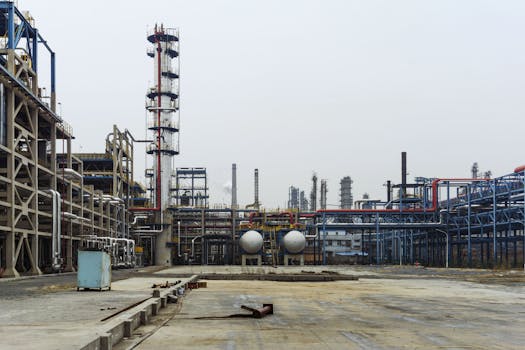
**
The global mergers and acquisitions (M&A) market is experiencing a dramatic surge, reaching its highest level since 2013. This unprecedented activity is primarily driven by a desperate scramble for raw materials, the very foundation of the global economy. Companies across various sectors are engaging in aggressive dealmaking to secure vital resources and strengthen their supply chains, reflecting a heightened awareness of geopolitical instability and the ongoing impact of the pandemic. This frantic pursuit of raw materials is reshaping industry landscapes and impacting global trade dynamics.
The Raw Materials Rush: Fueling the M&A Boom
The current M&A boom isn't confined to a single sector. Companies across the spectrum – from energy and mining to manufacturing and technology – are actively seeking strategic acquisitions to secure access to crucial raw materials. This includes:
Critical Minerals: The demand for lithium, cobalt, nickel, and rare earth elements used in electric vehicle batteries and renewable energy technologies is skyrocketing, leading to fierce competition for mining assets and processing facilities. This has resulted in a surge in mining M&A and lithium mining investments.
Energy Resources: The energy transition is driving significant investment in renewable energy sources, creating intense competition for resources like copper, used in wind turbines and solar panels. This heightened demand is fueling a wave of renewable energy M&A and green energy investments.
Agricultural Commodities: Concerns about food security and climate change are impacting the agricultural sector, leading to increased M&A activity among agricultural businesses aiming to secure land, water, and fertilizer supplies. This has amplified interest in sustainable agriculture investments and farmland acquisitions.
Semiconductors: The global chip shortage has highlighted the vulnerability of supply chains, pushing technology companies to invest heavily in securing semiconductor manufacturing capacity through mergers and acquisitions. This has contributed to an increase in semiconductor M&A and tech M&A activity.
Geopolitical Instability and Supply Chain Resilience
The current surge in M&A activity is inextricably linked to growing geopolitical uncertainties. The war in Ukraine, trade tensions between the US and China, and increasing protectionist policies have exposed vulnerabilities in global supply chains. Companies are prioritizing resilience and seeking to reduce their reliance on single sourcing by diversifying their supply networks through strategic acquisitions. This shift towards supply chain diversification is a key driver behind the current M&A frenzy.
The Role of Private Equity
Private equity firms are playing a significant role in this raw materials acquisition spree. Their deep pockets and long-term investment horizons make them ideal partners for companies seeking to consolidate resources and expand their operations. Private equity's involvement is particularly evident in the mining sector M&A and energy sector M&A, where large-scale projects require substantial capital investment.
Strategic Implications and Future Outlook
The current M&A boom presents both opportunities and challenges. While it allows companies to secure crucial resources and strengthen their positions in the market, it also raises concerns about market consolidation and potential anti-competitive practices. Regulatory scrutiny of these deals is likely to increase.
Furthermore, the environmental and social impact of these acquisitions needs careful consideration. Sustainable practices and responsible sourcing are becoming increasingly important considerations for investors and consumers alike. Companies involved in M&A activities must demonstrate a commitment to environmental, social, and governance (ESG) factors to maintain a positive reputation and attract investment. This trend toward ESG investing and sustainable M&A is reshaping corporate strategies.
Key Trends to Watch
Increased Scrutiny from Regulators: Antitrust regulators will be closely monitoring M&A activity to prevent the creation of monopolies and ensure fair competition. This increased regulatory focus will likely slow down some deal closures.
Focus on ESG Factors: Companies will face growing pressure to incorporate ESG factors into their M&A strategies. Sustainable and responsible sourcing will become critical differentiators in the market.
Technological Advancements: Technological advancements, such as AI and automation, will play a significant role in improving efficiency and reducing costs in the extraction and processing of raw materials. This will influence M&A decisions.
Regionalization of Supply Chains: Companies are increasingly seeking to regionalize their supply chains to reduce reliance on long and complex global networks. This trend will drive M&A activity within specific geographic regions.
The current surge in M&A activity is a clear indication of the heightened importance of securing access to raw materials. The global economy's reliance on these essential resources, coupled with geopolitical uncertainties and supply chain disruptions, is driving this unprecedented wave of dealmaking. As companies continue to prioritize resource security and supply chain resilience, we can expect M&A activity to remain robust in the foreseeable future. The key will be navigating the complex regulatory landscape and integrating ESG considerations into dealmaking strategies for long-term success. The future of the global economy, in many ways, hinges on the outcomes of these crucial transactions.




















